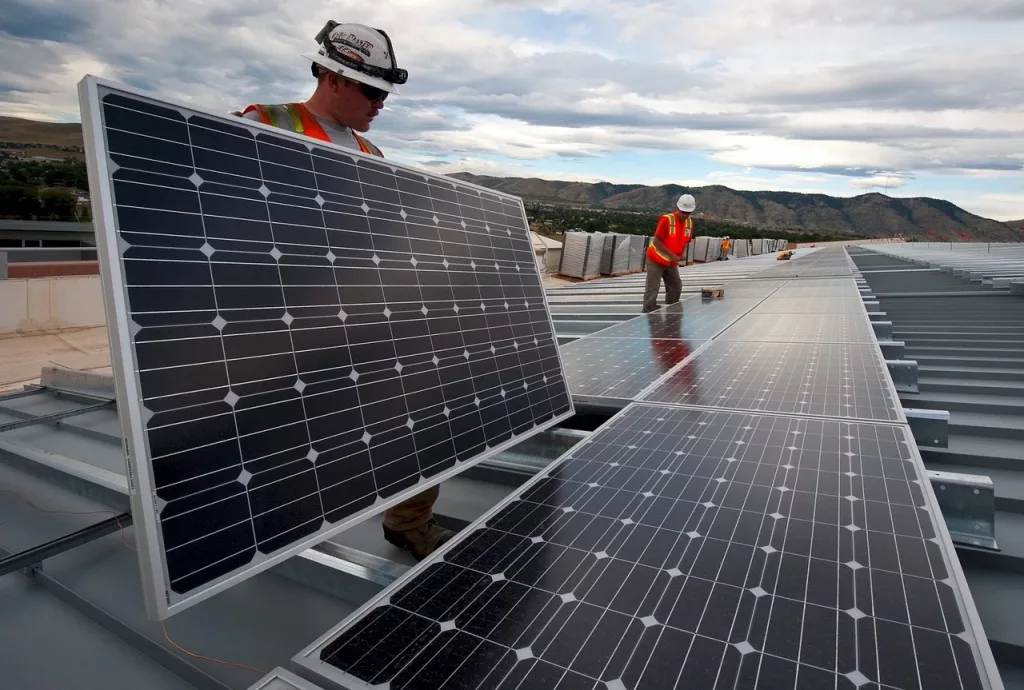The market for the rapid development of solar photovoltaic systems in the United States in the past decade is aimed at accelerating the deployment and using a variety of policies and programs to reduce the cost push.
Due to these efforts, photovoltaic has become more common and been more widely adopted. The price of a growing number of needs that have emerged PV system cost and comprehensive and reliable data. This article focuses on the installation of two reports from pricing trends, the first residential and commercial markets, and then focus on utility-scale industries.

Residential and commercial PV prices continued rapid decline in 2013 and 2014 in the residential and commercial markets, the price of photovoltaic systems has fallen by about 0.5% per year watts, on average, since 1998. However, has not happened at a steady pace during this period. In particular, the installation price decreased significantly until 2005, but then stalled after about 2009, while the PV supply chain efforts to keep pace with surging world demand.
For installation data in a number of the largest national market system in the first half of 2014 show that the installation is in line with prices declining pace in recent years. Specifically, according to the size of the system, based on the installation in Arizona, California, Maryland, Massachusetts, New Jersey, and New York’s system, the median price in the system installed in the first half of 2014 fell by an additional 5% to 12%, relative to the middle to install in those states in 2013. If the same six countries continue to reduce the price at the same track installation price in the first half of the first year of the system, then the national price in 2014 than those who witnessed the 2013 greater. Since 2012, module prices have remained relatively stable. Installed prices continue to fall until 2013. In fact, therefore, the first half of 2014 could mean a changing dynamic, the price decline in the system is largely in the PV system by reducing soft costs, and by reducing non-module hardware costs. In fact, in the solar industry and policy-makers have focused efforts to reduce costs in recent years relied on soft costs, recent trends indicate that these efforts may have begun to bear fruit.
PV incentive program administrators is to install the price dropped to a certain extent reduce the incentives over time, but also as a signal to the market to further reduce the cost of driving. Project managers also gradually increase the market down some traditional rebates and performance-based incentives appear in response to the financial support from other sources, for photovoltaic projects, most notably, in improving federal investment tax credits and solar renewable development of the energy certificate market.
Potential sources of variation may include items such pricing characteristics and properties of the individual installation. Installation price changes are also reflected in the administrative and regulatory procedures, and the differences in wages and taxes regional or local market and regulatory conditions, as well as differences. When regardless of reason, however, the presence of these variants, emphasizing the need for careful and specific, referring to the price of PV installations, apparently there is no single “price” as the characteristics of the US market, and even the specific market segments, such as a whole.
Over time the entire data sample, the capacity-weighted utility-scale PV projects average installation price fell by 40%. Last year, but the capacity of the weighted average price in 2013 remained virtually unchanged from 2012. This is obviously flat artifact may be an integral part of the samples change over time, that is the dominant big project was completed in 2013, in part tracking and / or ultra-high efficiency module, may have contracted 3? 4 years ago.
And residential and commercial PV, utility-scale PV installed prices vary widely. Among them, the 2013 completion of utility-scale projects, installation price from $ 1.9 / W, to 49 range / W, most of the projects fall within a narrow range of $ 2.6 / W to 350 / W, and similar or more a high level of variability in previous years.
Existing data confirm eloquent photovoltaic industry and policy-makers have succeeded in the past decade to promote significantly reduce the price of PV systems, and these prices are primarily responsible for the rapid acceleration of PV deployment in recent years. So far, however, the price has been the main driver installed, but not only – falling global prices of PV modules, which has recently been razed to the ground. Due to restrictions to further reduce the price of the module has been installed in the price of a large number of additional reductions will depend on the realization of such a strict significantly reduce the cost of PV systems and other non-component soft costs.
This was a guest article from Omnik, a world-famous PV inverter manufacturer. If you are intereted in solar power system, especially the solar pv inverter, visit http://www.omnik-solar.com/